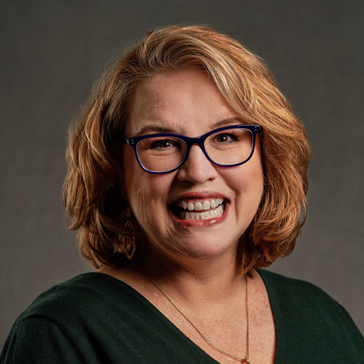Happy New Year from Education First! We hope you had a restful, joyous and peaceful holiday season. Now that the champagne bottles have been recycled, we are focused on what the future holds for students, educators and school systems in 2016.
We are confident that progress can continue to be made in improving our nation’s public schools this year, but only if policymakers and educators accept some hard truths and commit to some even harder work. 2016 needs to be the year of Getting Stuff Done (or GSDing as we call it here at Education First). Here are the Top 5 items we think should dominate everyone’s agenda this year:
Change the conversation on assessment to fewer and better assessments. Our motto: School systems need the fewest possible assessments with the least possible amount of testing time that generate the highest possible value and information. Balancing these isn’t easy, but it’s essential. Looking ahead to 2016 state legislative sessions and spring testing, it seems likely that some states will backtrack on their commitment to high-quality state assessments, adopt feel-good yet ultimately-toothless measures (like 2 percent testing time limits), and prompt parents in suburban communities to keep the opt-out movement alive. But the wrong battle is being waged. It’s not enough to reduce testing or scale back on accountability; we must continue to improve testing. Let’s not forget: Assessment is valuable for instruction. It doesn’t have to be burdensome, it doesn’t have to be soul-deadening and it doesn’t have to be either for accountability or for instruction. States need to take advantage of the ESSA assessment audits opportunity ($75M that must be spent initially on audits), as well as the love-it-or-hate-it flexibility in ESSA to consider new approaches to summative assessment (including new approaches that might look like what New Hampshire is testing in its PACE project). Districts and states must simultaneously improve the quality and instructional usefulness of assessments, clarify the purpose and use of summative assessment and streamline/eliminate assessments that are redundant or don’t meet this standard of quality and usefulness. Our “DIY” Fewer and Better Local Assessments: A Toolkit for Educators was designed to help school systems with the task. Next up from us in 2016: additional concrete policy ideas for what state leaders can do to streamline and improve quality.
Follow through to help teachers improve their instructional practice. Two forthcoming studies from RAND and Harvard will show that we’ve only just begun to scratch the surface of changing teacher practice so that instruction is deeply rigorous and meaningful for all students. Education First spent much of 2015 helping the field with Common Core, educator evaluation and integrating academics with social emotional learning (SEL)—focusing on fostering better teacher practice through professional learning, feedback and support. These systemic approaches need continued attention, but they need to become more coherent at the school and district level—with fewer silos across initiatives and departments, and a stronger district-wide focus on supporting teachers in every classroom to improve teaching. School districts and CMOs alike need a cohesive academic strategy that clearly defines a vision for great instruction and how districts will implement that vision. Almost universally, districts need to assess the capacity of school and district staff to improve instruction in the classroom. Based on where capacity exists or can be built to GSD, districts need to structure decisions, resources and accountability for curriculum, instructional materials, assessment, professional learning accordingly. Also in the post-Race to the Top era, state education agencies need to rethink their responsibilities and supports for districts and regional offices.
The flexibility states now have over their accountability systems must be used wisely. The Every Student Succeeds Act’s (ESSA) “big bet” is that, with greater flexibility and autonomy, state (and district) leaders can find better measures to signal to schools what is important, design new approaches to help schools improve, and hold them accountable when they falter. But now that state policymakers have the freedom to define the goals and vision for education in their states, states have to actually define the goals and vision for education in their states (!). It’s time to seriously GSD. While we’re bullish on the idea of state experimentation, we also count ourselves among those who worry about the varied capacity and leadership in states to navigate these new responsibilities and competing political pressures. Accountability redesign must strike the right balance among expressing state context and priorities, providing creative, smart and tailored measures anchored in rigorous academic standards and assessments that also incorporate local flexibility, and continuing to hold a high bar for expectations so that students can succeed in an ever-changing and challenging world. Students absolutely need more than math and reading skills for success in college and careers, so the new law’s allowance for paying attention to measures in addition to test scores is helpful. But such measures need to be chosen prudently and weighted carefully: Math and reading are the foundation—and telling schools that too many other things are also important could easily signal that nothing is really important. In a recent report, we identify ways states can provide the local control and flexibility necessary for widespread creativity and innovation, while redefining the state role in the education ecosystem. As we argued for Ohio, each state needs to have an aggressive and coherent strategy for regulatory flexibility that permits local customization, but maintains the state role in protecting the interests of students and taxpayers.
Maintain educator evaluations, but keep fixing them because our teachers deserve better. States and districts have spent five years designing and launching better educator evaluation systems, and yet pundits are predicting that states will use ESSA to back away from evaluations. It may be tempting to press pause in 2016, while attending to state accountability systems and other policies, but educators deserve great tools and feedback systems they can trust that give them the information and support they need. In this policy brief, we mapped out recommendations for how schools, districts and states can make evaluation an actual tool to improve practice, and not just an exercise in compliance: Principals must be supported to become instructional leaders. Teacher leaders and instructional coaches need to participate in or lead evaluation. Local school systems need more flexibility and assistance, particularly in deciding what assessments to use outside English and math (or else we’ll continue to have a proliferation of low-quality, evaluation-only assessments). States need to require evaluators to be trained in how to give high-quality feedback (only 19 currently have this policy) and model what great feedback looks like. Five districts featured in our recent brief are aligning systems, practices and daily actions to create a culture of actionable feedback. For example, district leaders in St. Bernard Parish, LA, aligned curriculum with teacher evaluations so that principals understand what they’re supposed to see in the first 30 minutes of a lesson. In Salem-Keizer Public Schools, OR, district leaders help principals improve their coaching skills through monthly trainings and small group sessions.
Build the cause of equity much more explicitly into all of our work. Many of us working to change and dramatically improve public education fight hard for high standards and accountability because we know that youth of color and poor children have been shortchanged for decades. But that commitment to equity cannot remain an implicit assumption. Too often education improvement efforts lack a sharp focus on narrowing achievement gaps and increasing equity in our schools’ and systems’ leadership and in the education policy community. A commitment to equity has to be the driving belief that permeates each of our actions and drives us to GSD in 2016. As Rishawn Biddle of Dropout Nation reminds us, school reformers need to build strong ties to community activists working on criminal justice reform, anti-poverty and social justice more broadly. What bridges can we build among our movements? And how can each education leader and organization follow through on increasing diversity in education leadership? We’re encouraged by many new efforts, including Education Trust-West’s #BlackMindsMatter campaign, the Surge Institute, the High Quality Assessment Project’s engagement of civil rights organizations and the US Department of Education’s Diversity to Lead initiative. At Education First, in 2016 we pledge to keep equity at the core of our work and increasing equity for the students who need our collective focus the most; we encourage others to do the same.
That’s our GSD list for 2016. What’s on yours? Shoot us a note or tweet at us at @ed1stconsulting. Let’s work together to follow through on what we’ve started and make 2016 a year of forward progress in education.


